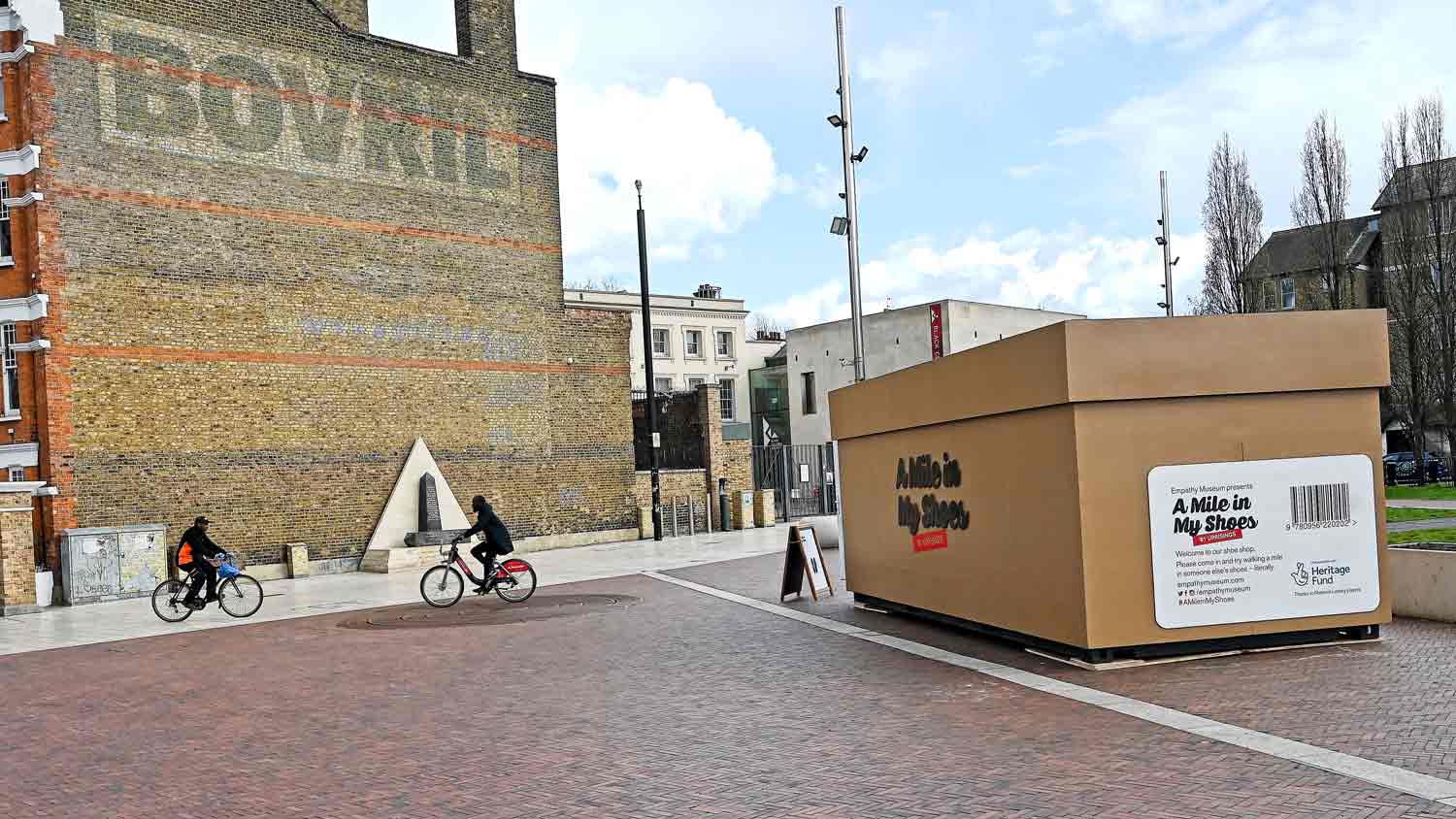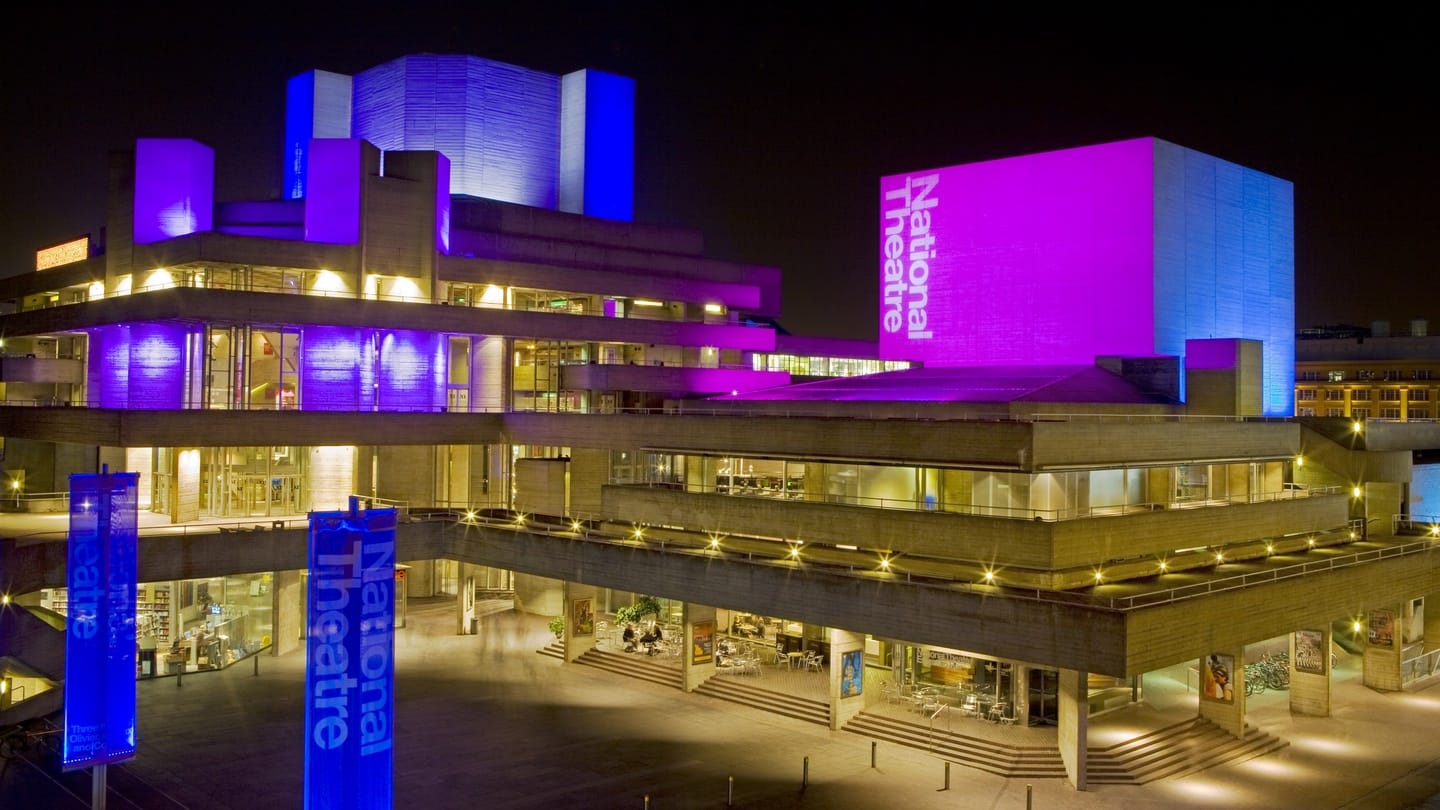Measuring up: storytelling, evaluation and what if we admitted that it isn’t working part 2/2
The money, the assumptions and a plea for something different...

Part 2: the money, the assumptions and a plea for something different
This is the second half of a piece that starts here. It works on its own but you’ll get more from it if you go back and read the first half before you read this.
i. Let’s talk about money/ everything is political
If you exist within an arts ecosystem which does not have enough money for everyone to do the things that they want to do, or that they perceive necessary, then -by necessity- some people will get the money and other people will not get the money. Unless you use an entirely random process of selection, you need some way of deciding who gets the money. If you ask people what the criteria should be, you’ll probably get something along the lines of ‘is it good?’: will the thing the people want to make be good? Which on the face of it seems like a sensible and valid question.
But it’s actually quite hard to answer. ‘Good’ is a values-laden judgement. It isn’t just about whether the actor remembers their lines or the dancer can jump high. Those things might be necessary for a piece of art to be ‘good’ but they don’t on their own guarantee its ‘goodness’. ‘Good’ involves all kinds of things which may or may not involve the message the artwork embodies, the function it provides, the economic and social conditions under which it was created, the way it addresses past failings in its artform, industry or wider society - as well as other totally subjective things like whether it was funny.
We don’t have time to go into all those considerations here, so I want to talk about two kinds of ‘Good’ that have emerged, a split between
The Art
and
The Communities
Which is to say a binary that has emerged between so-called 'art for arts' sake' and so-called socially-engaged art. Within this model we have:
The Art
This is about ‘excellence’ in a kind of old-school understanding: actors performing things in ways that utterly transport us, musicians playing with virtuosic skill, paintings and sculptures which take our breath away and which we couldn’t even begin to imagine creating ourselves. The Art doesn’t have to justify itself in any social way because it makes no argument for social impact. Its impact is emotional, transportative, meditative. It doesn’t try to change anything, it exists to move us.
It also doesn’t make any great attempt to claim social impact because it doesn’t need to - because, in 2024, it doesn’t take much public money. If you don’t take tax payer money, you don’t need to be benefiting tax payers. Instead you can benefit the people who pay high ticket prices to have transformative, soul-enriching experiences. This is often characterised as ‘art for arts sake’, patronised by people who can afford £30 or £60 or even £250 to go and see it.
The rest - or the Communities
This has an explicitly social function. In this excellent piece, artist Adam York Gregory ties its origin to a specific moment in history: the banking crash of 2008, austerity and the rise of David Cameron’s Big Society. This was the moment that artists were required to step up and fill the holes in services created by the ideologically-motivated decision to pass suffering on to regular people (while bankers were bailed out):
As an artist, you were no longer responsible just for creating art, you were conscripted into the realm of social work, where the metric of your success would be measured, not in terms of artistic excellence and expression, but in terms of 'engagement' and 'community'.
And Adam’s piece goes on to problematise these terms in a brilliant and incisive way.
Not enough of my career sits before 2008 for me to know what life was like before it became the role of the arts to plug the holes in society created by austerity. On some level, I’ve always accepted that this is part of the job description, while being plagued by a nagging feeling that people deserve better than any workshop I can come up with, and wondering whether, in doing my job, I’m a stooge of these hateful and greedy politicians who’ve done so much damage. I have always been worried by the extensiveness of the job description - and the fact that in seeking to try to do ‘art’ and ‘community’, we end up doing neither with the integrity the job deserves. Former director of the National Theatre Nick Hytner has argued that in fact we need two arts councils, following the way sport is funded in the UK.
There are two distinct funding bodies for sport. UK Sport has, in its own words, “a very clear remit at the ‘top end’ of Britain’s sporting pathway, with no direct involvement in community or school sport”. And it wins us medals. The other, Sport England (which has equivalents in the other home nations) invests in sport and physical activity to make it a normal part of life for everyone and gets us out on the track at the weekend. Both functions are vital.
Within Hytner’s vision (and it’s probably important to note here that his work sits within the ‘arts-for-arts-sake’ realm), the Arts Council would focus on ‘high-quality’ performances while a new body, analogous to Sport England, would deal with community-based initiatives. Hytner makes it clear that this would require extra funding and neither body would be ‘better’ than the other. His piece attracted both criticism and support.
I agree with some of Hynter’s critics - old plays in shiny theatres with famous people off the telly are not necessarily more high quality than anything else - but I also agree with him in that the current situation is not working. If we continue to think in this binary way (characterised broadly as aesthetics vs social impact) then we absolutely do need two different funders - because right now we have something set up to do one thing, boshed into a hole shaped like the second, without anyone having had the time to think through the implications.
I say that with a lot of love for the Arts Council and for many of the people who work there, doing hard, thankless work to maintain the subsidised arts sector. There are a lot less staff there than there used to be. Whatever they do, they get clobbered by someone. I don't think our current arts funding model serves anyone particularly well. It just feels like there wasn’t enough time to think any of this through. As if it wasn’t already enough to contend with questions of ‘quality’ and regional imbalance, now there are agendas like wellbeing and social impact to speak to.

ii. Social impact/ everything is still political
So let’s think a bit about social impact then. What bewilders me most about the whole social impact and impact measurement industry (because my god it is an industry) is that it’s presented as a values neutral term. Social impact. It implies we all agree on what kind of society we want to live in and therefore be impacted towards. In ten years of making discussion-based artworks I can tell you I have learned that this is absolutely not true and the way that a centre-liberal, western, heteronormative worldview is presented as default is hugely damaging. The further assumption that there is some kind of consensus about this is an obstacle to meaningful change and further silences people who face structural discrimination. But here isn’t the place to get into that so let’s pursue a thought experiment.
Let’s say we do want arts projects to have social impact, but not of the kind that is implicitly desired. How about a series of workshops which ‘invites people to gain skills’ in tax evasion or breaking and entering, or a large outdoor installation co-created with local people which contains all the terms of hatespeech for a specific local community - and uses ‘gamification’ to inspire people to use them more regularly, or a parade where people are encouraged to appropriate traditions from other cultures and make fun of them? How about a whole range of cultural experiences that make people meaner, greedier, more ok with hate, more inclined to violence, and less likely to follow laws that underpin public safety? This is all social impact. If we grade work as good/ bad based on its ability to have social impact, the success of all these projects would -in my opinion- create a society less appealing than the one we currently live in.
I’m left wondering how social impact is different to political impact. Does ‘social good’ always benefit the economy? Is that why there is so much emphasis on building skills and routes into careers in the Arts Council’s new ten year plan Let’s Create? So is social impact really about creating good and biddable workers and ultimately consolidating neoliberalism? (I warned you it was going to get political).
We need to stop hiding behind social impact and talk about political impact, if this is actually what we mean, but we’re not currently transparent enough to lay out the political vision that we apparently think all this work should be aiming for. The Arts Council recently found itself at the centre of an argument when it issued a statement that some artists interpreted as tantamount to censorship. So it seems there are implicit boundaries around what kind of impact -whether we call it social or political- is desirable, at least for tax-payer funded art. But maybe you only find out where the boundaries lie when you transgress them.
Even if we could agree on the boundaries and what social good would look like, projects don’t have impact solely within their intended field. There can be ‘negative’ social impact occurring as backlash from ‘positive’ social impact in the intended area. Let’s take an example that most people, and certainly our centre-liberal consensus, could agree would be a positive social impact - an artwork that causes audiences to value the National Health Service and think it should be funded in a way that allows it to deliver adequate care. Audiences leave proud of the NHS and determined to defend it. Some audiences also leave thinking that increased demand on the NHS should be avoided. They equate immigration with that increased demand and become very anti-immigration. Things get even worse when politicians pander to this sentiment - including for the NHS itself, when large numbers of immigrants who would have staffed it are put off by the increasingly hostile environment, the fact that they can no longer bring their family with them if they move here to work as a doctor. The NHS suffers. This was not the social impact that our centre-liberal consensus wanted. Perhaps we should also be asking what are the potential impact backlashes of our well-intentioned but undefined social impact projects.
And it isn’t just about the content of art made. The emphasis on impact changes the workforce of the sector. For impact to exist, it needs to be measured. And the need to do this changes the way that art happens. Sure, if I’ve taken 30K of tax payer money to do an art project, then I should be accountable and there should be checks and balances to make sure I don’t spend that money on a luxury holiday, but the need for measurement means that someone needs to do it. Job titles like ‘impact producer’ emerge. The more things people are required to measure, the more resources are diverted away from front-line activity and towards administrators who do the work of measuring. Does this serve the change we are trying to make? Or just our abilities to secure the next grant?

iii. A case study: A Mile in My Shoes
As I tried to wrestle down the ideas in this piece, I spoke to a whole range of different people. Clare Patey is the kind of artist who has ideas that you wish you had thought of. A project where a primary school grows, harvests and cooks all the ingredients needed for a school dinner. A project that saw Southwark bridge closed to traffic and strangers eating together at 300 metres of tables. A project in which you put on headphones and listen to someone talking about their life, while you walk a mile in their shoes - literally. What I like most about Clare’s work is that you can explain a project in a sentence so that anyone can understand what it is and why it might be interesting to take part in, but that this description conceals the depth of the project hiding, iceberg-like, beneath the surface.
All these projects are socially-engaged, in the sense that they are concerned with people and their stories, and what we might all gain by listening to other people and taking their perspectives for a moment. But the projects are also aesthetically considered, intellectually grounded, and realised with high production values. And these add to the projects’ engagement value. The aforementioned A Mile in My Shoes is housed in a shipping container designed to look like a giant shoe box. Taking up a temporary home in a town square, park or shopping centre, it invites attention. Having worked on the project, I know firsthand how many people approach it and ask ‘What is this then?’ because it looks so intriguing: because of the design. Then you give them the one line: ‘It’s a project where you walk a mile in a stranger’s shoes, while listening to them talk.’ And you add, ‘dyou want to have a go?’ Next question is often, ‘How much does it cost?’ When reassured that it’s free, a really high number of people say, ‘oh go on then’ or tell you they will come back in their lunchbreak or when they’ve dropped their kid to nursery or later with their mate. And they actually do.
Within an arts framework that separates art art from social impact community-focussed work, where does A Mile in My Shoes sit? If we accept that ‘art art’ takes place in arts-specific buildings and features solely the talents of professional artists, it isn’t that. Being situated in public space is central to the success of the project, as are the diverse stories one can listen to - recorded and edited by audio professionals but with the aim of centering the speaker, rather than adding a whole load of flashy design elements.
It is a socially-engaged project but not one that sets out to have participants gain skills or change their behaviour in relation to a specific question. Having witnessed it in action, it does have social impact, not least when people return from their walk and want to talk about what they just experienced. For a recent iteration of A Mile in My Shoes, Clare and Empathy Museum associate Olivia Douglass collected stories about 1981 uprisings in Brixton, Handsworth, Toxteth, St Pauls and Moss Side. Over the two weeks that the giant shoebox was installed in Windrush Square in April 2023, it became a space to have open conversations about race in contemporary Britain. Shoebox staff started keeping a list of helpline numbers - for housing assistance, mental health support, legal advice - as conversations revealed how many participants were in need. As a free and welcoming location, within a society ravaged by fourteen years of austerity, the giant shoebox and the art project it contains had taken on a social role. How would we measure the social impact of this? Or perhaps we should be asking how do we measure the impact of the installation ending on those people who’d come to depend on it? The problem with artists plugging the gaps in a broken social care model is always legacy, because the money always runs out at some point. A Mile in My Shoes is a profoundly powerful project which is both ‘high quality art’ and engaged with a local community. It defies a binary approach to funding art. It also defies any model of measuring social impact.
A Mile in My Shoes could very easily become the hero piece for any number of campaigns. When I worked with Clare at Empathy Museum, we had so many conversations about who we’d work with, whose money we’d take, and what the boundaries were for it staying a piece of art rather than the fancy marketing gimmick for someone else’s agenda. But there’s something about integrity and authenticity that audiences are sensitive to. People are not stupid - they know when someone is trying to ‘impact’ them rather than when they’re in a space of genuine encounter. I will never have any data to back up this claim, but I feel like A Mile in My Shoes -and so many other projects like it- would lose their richness if they were put through the social impact sausage machine and came out as a series of easy measurable chipolatas. Their power is in their ability to support the unexpected, and the space they give to audiences. I don’t know where projects like this sit in a future funding landscape, and that worries me.
iv. The Emperor is naked
We can all play the game. And we do. We can come up with a measurement framework which delivers outcomes likely to get us funding for our next project, or the future of our institute, or our venue. And of course, knowing we can pay the rent and put food on the table next year is important: artists should not have to live in a state of economic precarity any more than anyone else should. But I wish we could be a bit more honest about this. None of the artists I talked to when I was thinking about this piece are in this for the money. We all believe in the transformative power of art and stories, and that’s what we’re working towards. It’s possible to square it in your head by seeing the lip service paid to the social impact measurement industry as a kind of tax. Are the measurements we’re required to perform useful and meaningful? Not at all. Will we continue to perform them? Absofuckinglutely. Why? Because we have no choice. And that helps no one. What an absolute state we’ve got ourselves into.
So here are my recommendations. Because you can’t spend 5000 words complaining without at least proposing the beginnings of what we might do differently.
Let’s acknowledge the system we have does not work, and has actually bloated the arts with a bunch of job roles which serve measurement itself, rather than ideas, or communities, or art, or whatever variant of social change you are after.
Let’s recognise that the act of measurement itself is biassed and never ever ever values-neutral. Let’s instead talk about the values that underpin our work and find a way to live with each other in evolving civil disagreement about them if needs be. Instead of suppressing disagreement by deifying consensus, let’s support art to do what it is really good at: asking irresolvable questions and providing space for people to sit -or walk- with them.
Let’s try to talk with funders (who are not a faceless monolith) about what they would find interesting and useful to know, what we would find interesting and useful to know, and what resources it would take to pursue meaningful indicators of how people experience art, instead of playing this game that everyone involved knows is a bit of a sham.
Let’s admit that art has unintended consequences and unintended impacts and put energy into developing methodologies which look for them, rather than importing evaluation models which never find them, because they’re not designed to look for them. Let’s learn from other sectors but also recognise that arts and culture is different and makes its own demands.
Let’s admit all this is hard, that it might be a process of failing better for a very long time (maybe forever) but that transparently trying to improve is better than pretending this stuff is as simple as a story for eight year olds.
And let’s only ever vote for politicians committed to providing adequate social care for the most vulnerable people in our society, rather than fobbing them off with workshops with artists like me.

